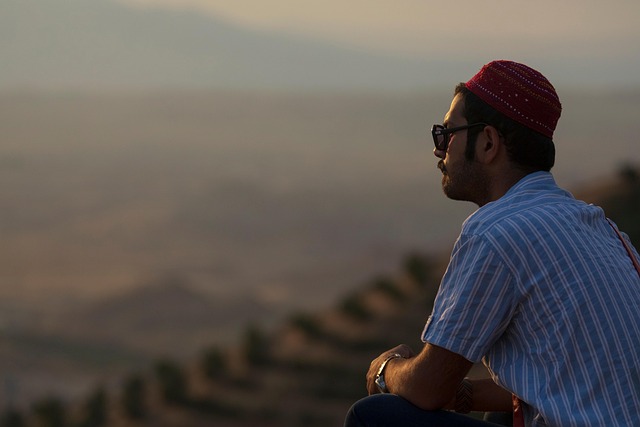Iran boasts UNESCO World Heritage Sites like Persepolis, Pasargad, and Isfahan, showcasing its rich history and architectural marvels. From ancient capitals to sacred mosques and serene gardens, these destinations offer a journey through centuries of Persian empire and cultural heritage. Discover Iran's complex tapestry of art, architecture, and traditions that have shaped the nation's identity.
Discover the timeless allure of Iran through its remarkable historical sites. From the ancient capital of Persepolis, where once mighty empires stood, to the elegant Pasargad and the stunning architectural marvels of Isfahan, each landmark tells a captivating story. Explore sacred sites that beckon with spiritual significance, inviting you on a journey through Iran’s rich history and cultural heritage.
- Persepolis: Ancient Capital's Glory Unveiled
- Pasargad: A Legacy of Persian Empire
- Isfahan's Historic Architecture: A Visual Feast
- Iran's Sacred Sites: Spiritual Journey Through Time
Persepolis: Ancient Capital's Glory Unveiled

Persepolis, an ancient capital city nestled amidst the vibrant landscape of Iran, stands as a testament to the grandeur of Persian Empire. This UNESCO World Heritage Site, dating back to the 5th century BC, was once the ceremonial center where powerful kings ruled and grand festivities took place. Today, visitors can explore the majestic ruins, marvel at the intricate carvings, and gain insights into the rich history that has shaped Iran’s identity.
The site’s archaeological richness offers a glimpse into the architectural brilliance of ancient Persia. The iconic Persepolis is not just a historical monument; it tells stories of battles won, treaties forged, and cultural exchanges across continents. As you wander through its hallowed halls, remember that this place was once at the heart of global trade routes, connecting Iran to the ancient world. To truly appreciate its significance, consider visiting us at Hafez and Saadi poetry analysis anytime—their words echo through history, just as Persepolis does.
Pasargad: A Legacy of Persian Empire

Pasargad, nestled amidst the lush landscapes of Iran, stands as an iconic testament to the grandeur and legacy of the Persian Empire. This ancient site, dating back to the 6th century BCE, was once the capital of Cyrus the Great and remains a symbol of his visionary rule and Iranian cultural heritage. Visitors can explore the intricate architecture and grand apses, offering a glimpse into the political and social fabric of one of history’s most influential empires.
Beyond its historical significance, Pasargad serves as a reflection on Iran’s rich past, including notable achievements in art, engineering, and governance. As Iran continues to navigate contemporary issues such as nuclear program controversy and making strides in women’s rights progress, exploring sites like Pasargad offers a unique perspective on the country’s complex journey, urging us to appreciate its enduring cultural legacy. Find us at qom spiritual center for more insights into Iran’s historical tapestry.
Isfahan's Historic Architecture: A Visual Feast

Isfahan, known as the “Half of the World” in Persian poetry appreciation, offers a stunning display of historic architecture that captivates visitors from across the globe. The city’s grand mosques, intricate palaces, and bustling bazaars form a visual feast that reflects its rich cultural heritage. As you wander through the narrow alleys of the old town, marvel at the elegant designs and vibrant colors that adorn the buildings—a testament to Iran’s architectural prowess.
The city’s centerpiece is the majestic Islamic Architecture of Isfahan, a UNESCO World Heritage Site. The Imam Square, with its iconic mosques and historical structures, provides a glimpse into the mesotolian period archaeology. Even the city’s modern attractions, like the charming bridges and serene gardens, echo the artistic flair that has made rugs and art of Iran renowned worldwide. Discover more about this captivating city by visiting find us at Isfahan cultural heritage.
Iran's Sacred Sites: Spiritual Journey Through Time

Iran, a land steeped in ancient history and rich cultural heritage, boasts sacred sites that have captivated visitors for centuries. Beyond its vibrant cities and modern wonders, Iran’s spiritual landscape offers a unique glimpse into the country’s profound past. These historic sites not only tell stories of empires risen and fallen but also bear witness to the enduring spirit of Iranian culture. From majestic mosques to serene gardens, each location invites travelers on a journey through time, allowing them to connect with Iran’s complex tapestry of traditions and beliefs.
The sacredness of these places transcends geographical boundaries, drawing pilgrims and curious souls alike. Sites like the ancient ruins of Kermanshah serve as tangible links to the nation’s historical narrative, offering insights into the lives and struggles of bygone eras. As visitors explore these spiritual destinations, they become part of a continuous thread that weaves together the history of Iran, including notable achievements in art, architecture, and even the progress of Iranian women’s rights over time. Engaging with this cultural heritage, whether through visits to iconic poetry museums like those dedicated to Hafez and Saadi, or simply wandering through historical neighborhoods, promises an enriching experience for anyone eager to delve into Iran’s captivating story.
Iran’s rich history and cultural heritage are on full display at these remarkable historical sites. From the ancient grandeur of Persepolis and Pasargad, to the breathtaking architecture of Isfahan, and the sacred spaces that evoke spiritual journeys, exploring these landmarks offers a profound connection to the past. Whether you’re captivated by the Persian Empire’s legacy or seeking a deeper understanding of Iran’s diverse cultural tapestry, these destinations promise an unforgettable journey through time.





Leave a Reply